On the evening of June 11, he was regularly dropped from orbit and the cargo ship Cygnus OA-7 "John Glenn" burned down in the atmosphere. After undocking from the ISS, he spent a week in free flight, launched four cubes and set fire to the board. More precisely, it was an experiment SAFFIRE-III - Spacecraft Fire Experiment (Experiment "fire on the ship"). The third experiment was the last in the series and is an excellent opportunity to talk about experiments with a flame in zero gravity.
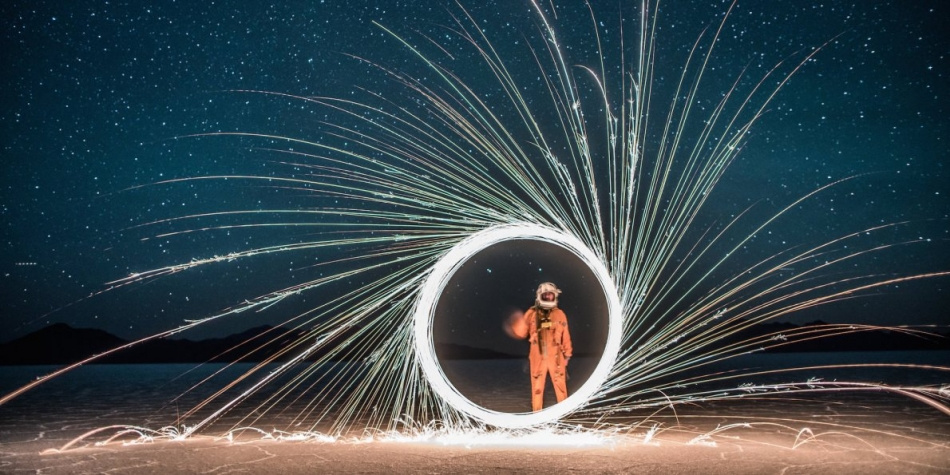 Photo of Everyday Astronaut / Tim Dodd
Photo of Everyday Astronaut / Tim DoddFire at the dump
The main task of the SAFFIRE experiment series is to collect data to create computer models of flame propagation using materials used on spacecraft. This will seriously reduce the risk of fires on the ships of the future. On the ISS, for safety reasons, it is impossible to conduct large experiments with combustion, therefore, SAFFIRE was lit in a cargo ship filled with debris, which should have ceased to exist soon. Structurally, SAFFIRE is a large box in which samples are ignited in the air flow from the fans.
 Appearance SAFFIRE, photo NASA
Appearance SAFFIRE, photo NASA The scheme of the experiment, drawing NASA
The scheme of the experiment, drawing NASAIn June 2016, during the first experiment of the series, SAFFIRE-I, they set on fire a piece of fabric from a mixture of cotton and fiberglass measuring 0.4x1 meters. To make it clear how much this is, the previous record was 10 cm. In order to look at the behavior of the fire in various conditions, the fans changed the direction of air movement during the experiment. And it looked like this:
In November 2016, in the second experiment of the series, SAFFIRE-II, nine small “cards” of various materials were burned to determine their fire resistance and the effect of material thickness on the spread of fire. The video below shows the burning of Plexiglas, from which the portholes of spacecraft and the heat-resistant material
Nomex are going to be made, which is also used in earth overalls.
And finally, in the third experiment, which took place in early June, they burned the same fabric as in the first, but with a different air flow rate. After the first experiment, the data were entered into a computer model, certain results were obtained, and the third experiment tested the predictive ability of this model. If the burning rate of the same material at a different blow intensity coincided with the predicted computer, then the model was built correctly.
In general, it was found that the flame spreads more slowly than expected. The estimate of the speed of the flame for small samples that were burned in other experiments before, was overestimated three times. And this is not definitely a good discovery - such a slow flame can produce less smoke, which is why the fire can be detected and started to be eliminated later.
Why were samples burned in air? The fact is that in manned spacecraft the fans must work, so that in the air, which does not mix in weightlessness due to the absence of
convection , local concentrations of carbon dioxide that are potentially dangerous for humans do not occur.
The SAFFIRE program has not been completed, and IV-VI experiments are under development.
Cut the bass with spices
Despite serious safety restrictions, the ISS have enough of what can be ignited with the approval of the MCC. In order to prevent the situation from getting out of control, a special MSG glove box, Microgravity Science Glovebox, was brought to the station in 2002.
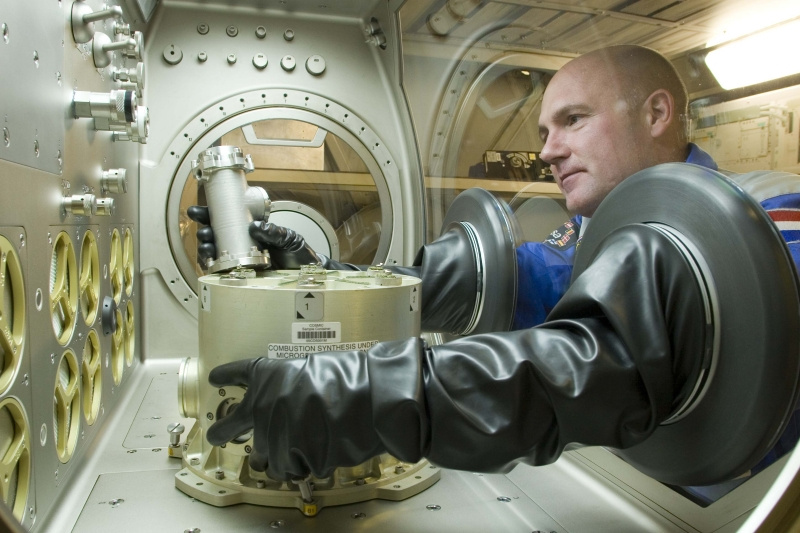 Ground analog for training, photo by ESA
Ground analog for training, photo by ESAIn MSG there is a rather small isolated volume, which is used for safe handling of liquids, hazardous substances and fire. If necessary, the chamber can even create a reduced pressure, so that in case of an emergency depressurization, the contents will not fly away. And there are several experiments related to fire.
BASS - The Burning and Suppression of Solids deals with the burning of various materials. Examines flat samples of 10 cm x 1 or 2 cm, rods and parts of the sphere. It was in this experiment that plexiglass and cotton with fiberglass were burned, the burning data of which specifies SAFFIRE. It is possible to get not only interesting information about the behavior of burning materials in zero gravity, but also simply amazing photos:
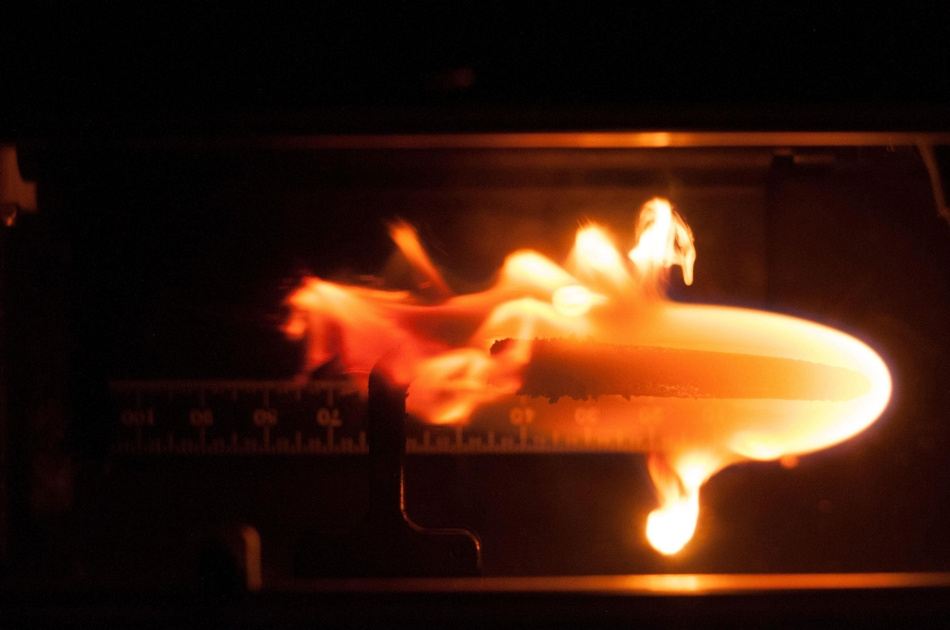 Hereinafter NASA photo
Hereinafter NASA photo

 SPICE
SPICE - Smoke Point in Coflow Experiment (“Experiment of maximum smokeless height in a wake”) explores the moment when a gas flame begins to form soot. This should be useful for studying the spread of fire and the mechanisms of soot formation when burning materials in weightlessness. The development of SPICE is the
SLICE experiment.


Experiments
SAME and
SAME-R study the distribution of smoke and test the operation of smoke detectors.
In general, over the course of several years, the number of experiments performed amounts to hundreds.
Flame jellyfish
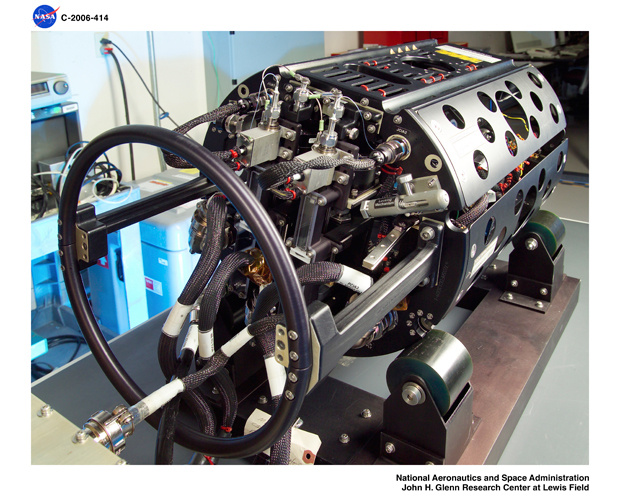 FLEX experiment equipment
FLEX experiment equipmentA separate installation was delivered to the ISS for the FLEX experiment - the FLame Extinguishment Experiment (Experiment Fire Extinguishing). He studies the combustion of liquid fuels under different atmospheric pressure and with the possible presence of carbon dioxide or helium in the air. It was in this experiment that peculiar “fiery jellyfish” were obtained, which, according to the principle of operation, are most likely close to a
pulsating jet engine .
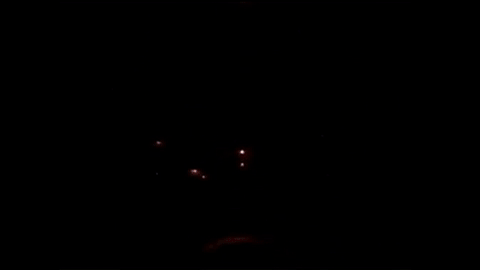

Visual scheme of the installation and the "jellyfish".
It is also interesting to note that in some cases a cold flame appeared during the experiment. A conventional flame when burning hydrocarbons produces soot, carbon dioxide and water. In a cold flame, carbon monoxide and formaldehyde are formed. Theoretically, the knowledge gained about cold flames can help create
more efficient internal combustion engines in the future.
Candles in front of the console
 On the right is a candle burning in terrestrial conditions.
On the right is a candle burning in terrestrial conditions.According to the World Manned Cosmonautics Encyclopedia, the first candle in weightlessness was tried to be lit in 1992 in the mission of the shuttle STS-50. The candle caught fire, but due to the lack of convection the flame turned out to be round and of a different color. Approximately 80 candles burned at the Mir station. Without air flow due to convection, the flame can receive oxygen only due to diffusion and usually goes out fairly quickly due to the depletion of oxygen in the air in the immediate vicinity. But, according to some sources, the record of the duration of burning was 45 minutes instead of 10 in terrestrial conditions.
The flames were so pale that the 35 mm camera had to take photos instead of video. It is good that photo and video equipment has since greatly advanced forward.
Sex, UFOs and Pyromania
I have already spoken about the mission of the shuttle STS-75 three times. They were “lucky” even many years before the start - in the fake about the
alleged experiments with sex in space, it was their number. It was they who launched the
“satellite on a string” , and the footage of this satellite's shooting
was taken for a UFO. And one of the experiments with the flame in zero gravity was carried out just in this flight. Crew member Jeffrey Hoffman joked:
Back in the scouts, I was different to pyromania. I love flame, and in weightlessness it behaves amazingly, quite differently [than on Earth]
The crew had a small glove box in which they lit a regular candle for a birthday cake and burned several paper samples. At the post-flight press conference they begin to talk about experiments with a flame from 8:17. It is curious that when the air flow went from right to left, a piece of paper to the right burned faster than to the left, which is contrary to earthly experience. At the 11th minute, divergent patches of paper look very beautiful, one of the astronauts even joked "don't let this break out of the cage."
In combat conditions
The only real fire in zero gravity occurred on February 23, 1997 at the Mir station - the oxygen regeneration checkbox caught fire.
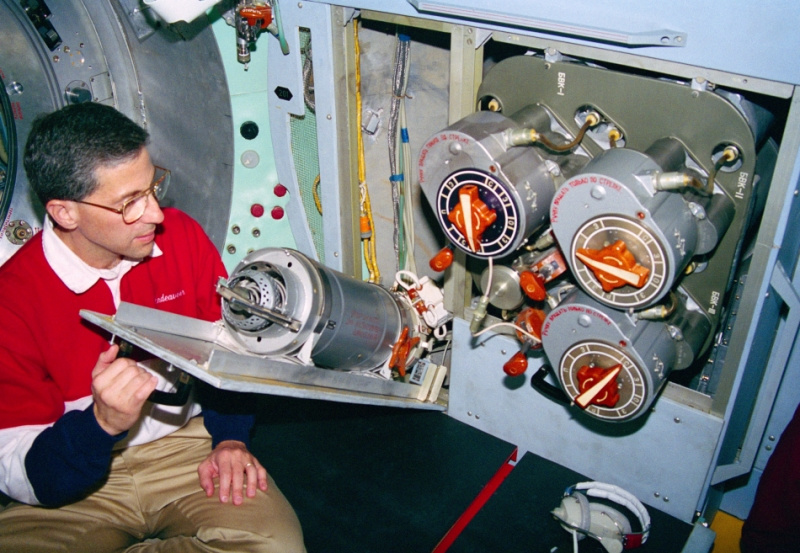 Regeneration Checkers Photo by NASA
Regeneration Checkers Photo by NASA Burnt Bomb
Burnt BombThe fire burned for about 90 seconds, did not cause critical damage, but great problems were caused by smoke - it was not clear how safe it was to be at the station. The astronauts first put on insulating gas masks, but they had a limited resource, and soon they had to take a chance and again begin to breathe the station’s air. Later, dozens of pieces from this game were burned on the ground, but they could not repeat the problem, it seems that a single defect led to a fire.
A very good film was shot about the accident.
Conclusion
The more samples are burned in orbit in the name of science, the less likely a real fire will occur and the more likely it is to be noticed in time and quickly eliminated. A bonus to the scientific data are potentially useful knowledge on Earth and smart photos and videos.